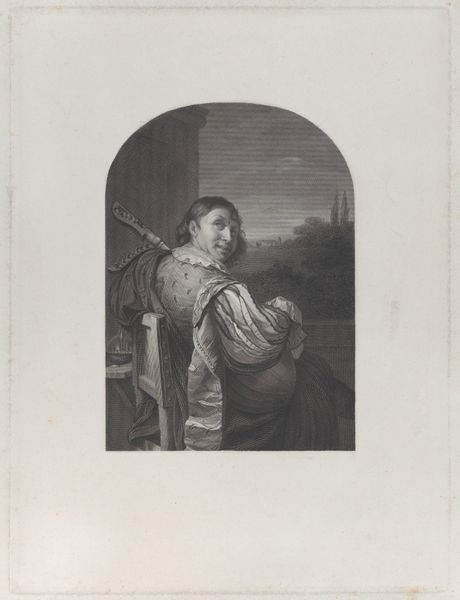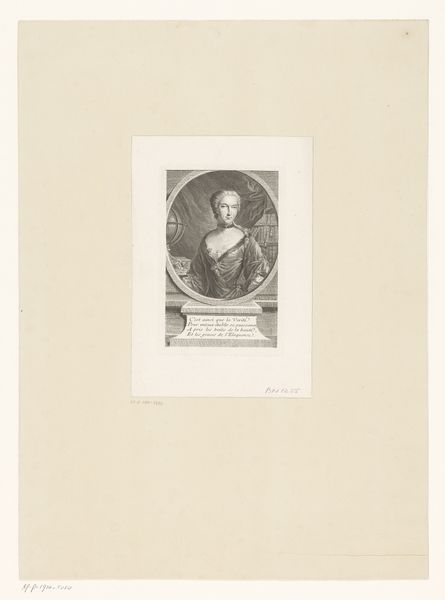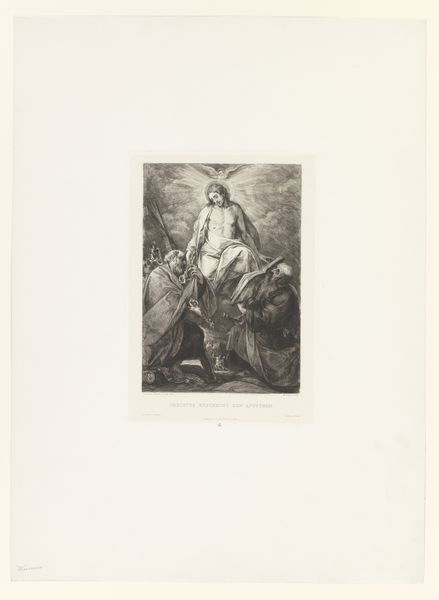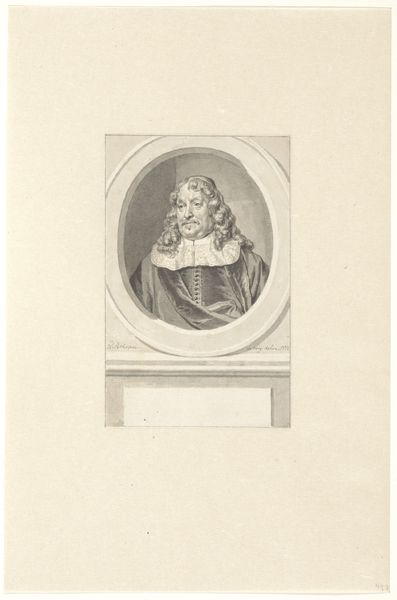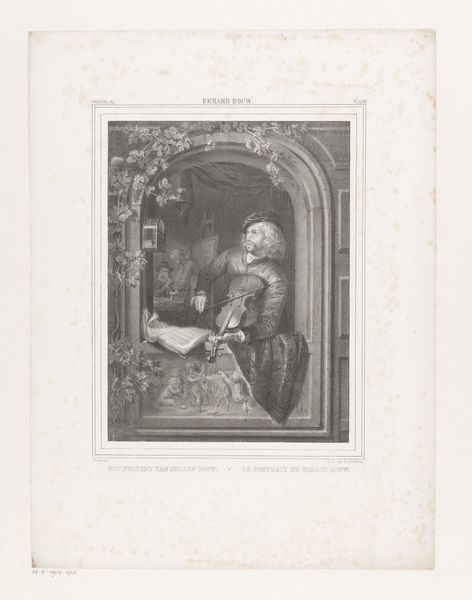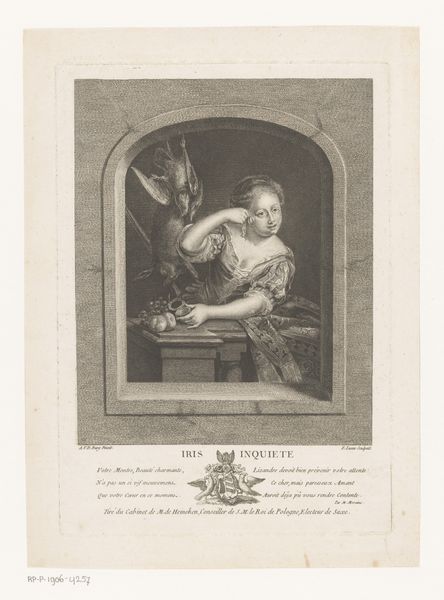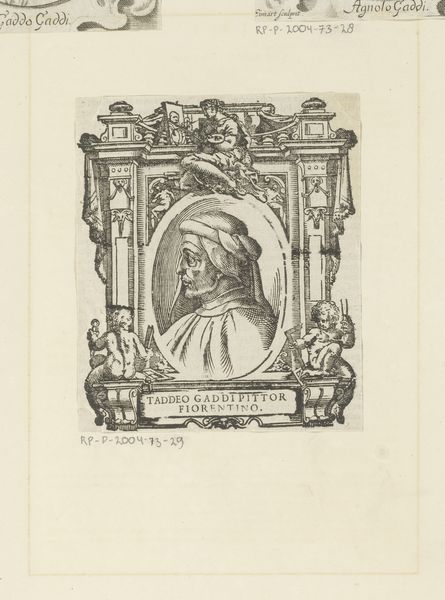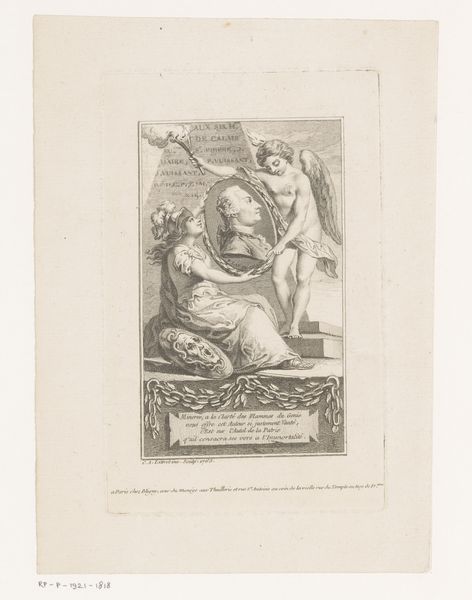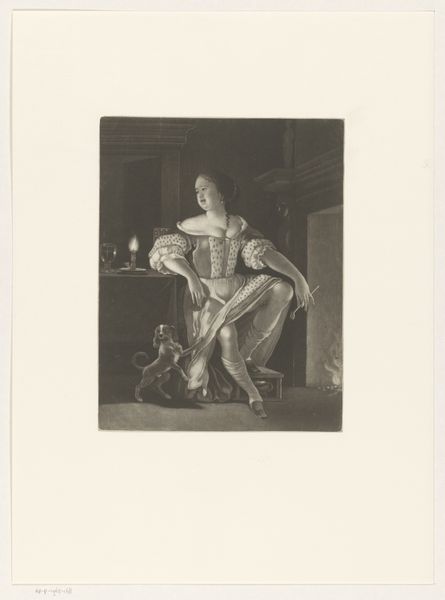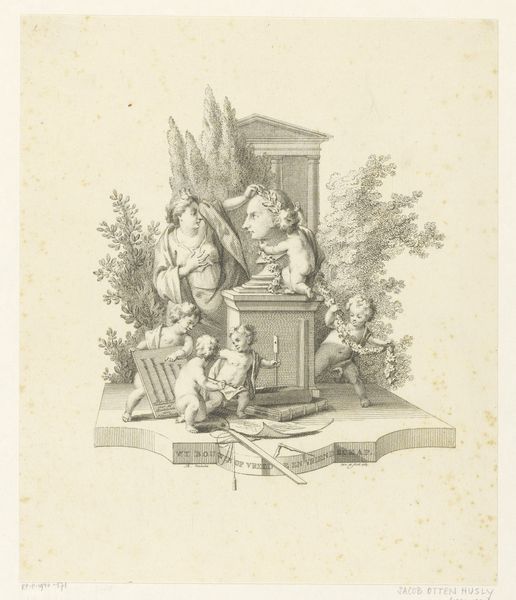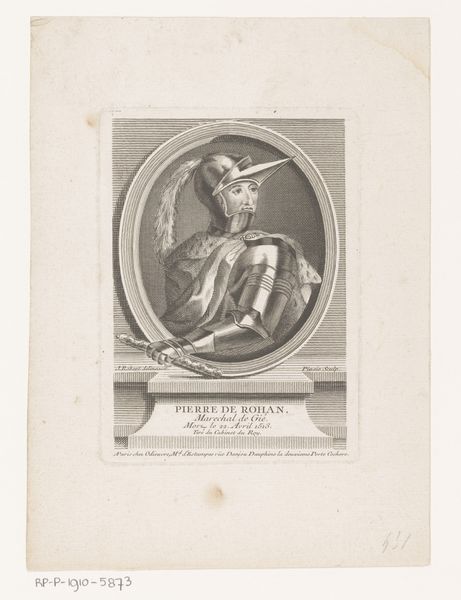
print, etching
#
baroque
# print
#
etching
#
genre-painting
#
nude
Dimensions: height 190 mm, width 128 mm
Copyright: Rijks Museum: Open Domain
Curator: Before us we have Michel Lasne’s etching, "Luitspeler en vrouw," created sometime between 1600 and 1667. What are your initial thoughts on this piece? Editor: Well, there’s a subtle dance of power at play, isn't there? The man is consumed by music, face pressed close to his lute, while the woman offers her breast with a look that could be either indulgence or...mild exasperation? It feels staged. Curator: You’ve honed in on a compelling dynamic. I notice, too, that the lute, and by extension, music, occupies a symbolically phallic space in the composition. It steals the male figure’s attention. It's almost a reversal of traditional roles, where art supplants desire, or redirects it. Editor: Indeed, and notice how the woman’s pearl necklace almost mimics a chain. It's drawing my eyes directly to the bosom. She becomes both a source of life and of…containment? An alluring constraint of domestic life of the time? This visual vocabulary really highlights cultural assumptions about women, doesn’t it? Curator: Absolutely, and it speaks volumes about the conflicting societal views. It's interesting how Lasne, through his use of etching, a technique favoring precision and detail, manages to capture such emotional ambiguity. The way light and shadow define their faces invites the observer to unpack these silent stories. Editor: The Baroque period loved drama, and this domestic scene, on the surface so simple, bristles with unresolved tension. You've got innocence, the lure of pleasure, the confinement of social roles… all swirling together in the hatching and cross-hatching. Curator: In just the close interplay of musician and muse, Michel Lasne encapsulates so much more about desire, artifice, and gendered expectation. The tension is what truly grabs me. Editor: It’s a piece that resonates far beyond its era. It speaks to the age-old drama of relationships and societal roles; who holds the real instrument, or perhaps more precisely, who truly calls the tune?
Comments
No comments
Be the first to comment and join the conversation on the ultimate creative platform.

